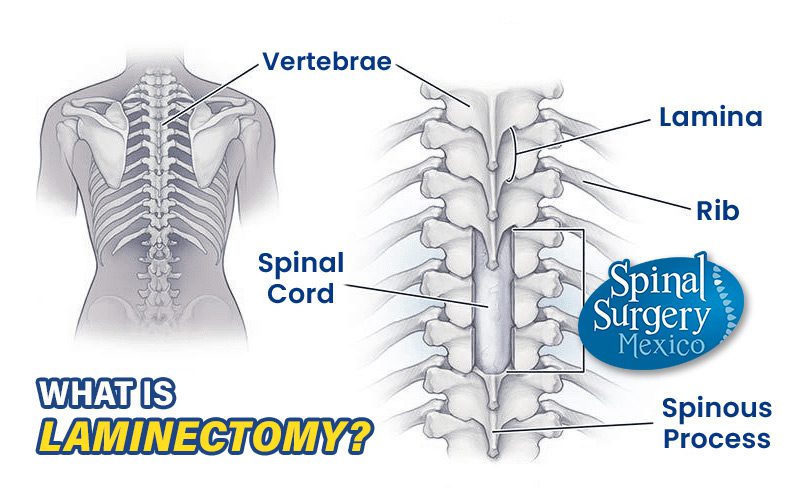What is it?
It is a surgical procedure where part or all of the lamina, a bony arch on the back of a vertebra, is removed to relieve pressure on the spinal cord or nerves. This decompression surgery is often performed to treat spinal stenosis, herniated discs, or bone spurs that compress the spinal cord or nerve roots.
Here’s a more detailed explanation:
What is the lamina? The lamina is a section of bone that forms the roof of the spinal canal, protecting the spinal cord and nerve roots.
Why is it done? Laminectomy is performed to create more space within the spinal canal, alleviating pressure on the spinal cord or nerve roots. This pressure can be caused by:
– Spinal stenosis. Narrowing of the spinal canal.
– Herniated discs. When the soft cushion between vertebrae slips out of place and presses on nerves.
– Bone spurs. Abnormal bone growths that can impinge on nerves.
What are the benefits? By relieving pressure, laminectomy can reduce pain, numbness, weakness, and other symptoms caused by nerve compression.
Is it the only option? Laminectomy is usually considered after other treatments, like physical therapy or medication, have not provided sufficient relief.
Types of Laminectomy:
Lumbar Laminectomy. Focuses on the lower back (lumbar spine).
Cervical Laminectomy. Focuses on the neck (cervical spine).
Thoracic Laminectomy. Focuses on the middle back (thoracic spine).
Surgical Procedure: The surgeon makes an incision in the back, moves the muscles aside, and removes the lamina. In some stabilize the spine.
*Credit: The Cleveland Clinic

